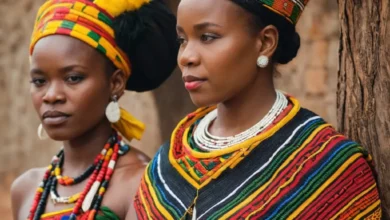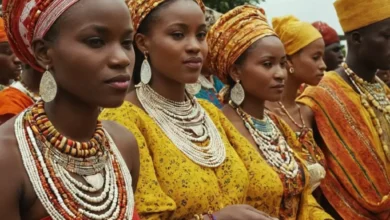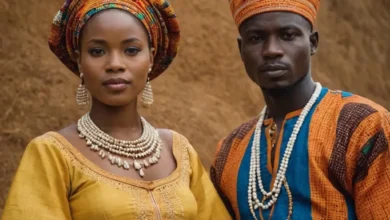Congolese Traditional Clothing
The Democratic Republic of Congo, a vast nation in Central Africa, boasts a rich and diverse cultural tapestry. This diversity is beautifully reflected in its traditional clothing, which not only serves as a visual spectacle but also carries deep cultural significance.
From the vibrant colors of the liputa to the intricate designs of other attire, Congolese traditional clothing is a testament to the artistry, history, and identity of its people.
The Liputa: A Symbol of Congolese Identity
The liputa, a flowing, brightly colored robe, is perhaps the most iconic piece of Congolese traditional clothing. This garment, traditionally worn by women, is made from woven fabric, often with intricate patterns and designs.
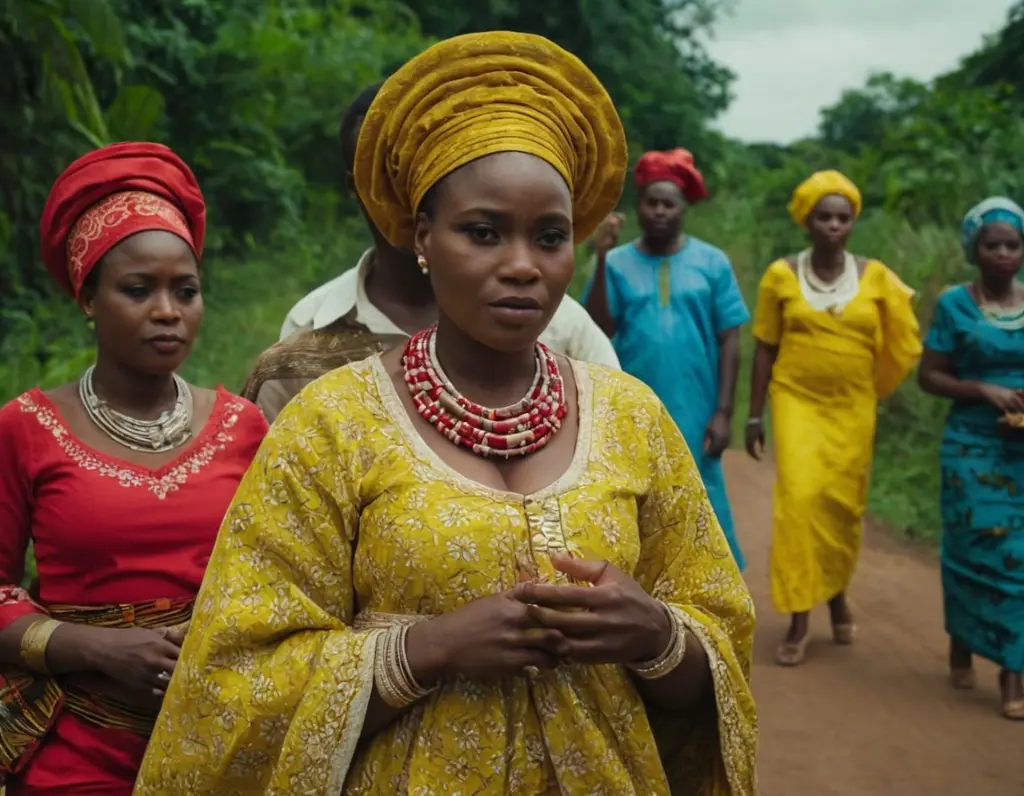
Its origins can be traced back to the Kuba Kingdom, where it was worn by royalty. The liputa has since transcended its royal beginnings to become a symbol of Congolese identity, representing both elegance and strength.
See also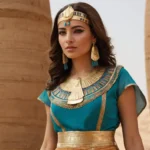 Egyptian Traditional Dress: From Ancient Pharaohs to Modern Styles
Egyptian Traditional Dress: From Ancient Pharaohs to Modern Styles
Variations in Style and Meaning
The liputa varies in style and design depending on the region and the occasion. Some versions are adorned with beads, shells, or other embellishments, while others are left plain. The color of the liputa also carries symbolic meaning. For instance, red often represents power, blue symbolizes peace, and yellow signifies wealth.
Crafting the Liputa
Creating a liputa is a laborious and time-consuming process, requiring considerable skill and artistry. Traditionally, the fabric is woven by hand using natural fibers like raffia or cotton. The intricate patterns and designs are often created using dyes made from plants and minerals. The process of weaving and dyeing the fabric is passed down through generations, ensuring the preservation of traditional techniques and knowledge.
Beyond the Liputa: Other Cultural Attire
While the liputa is a notable symbol of Congolese culture, the country’s traditional clothing scene is far more diverse. Different ethnic groups across the country have their own unique styles and garments, each with its own history and significance.
The Kuba Cloth: A Masterpiece of Weaving
The Kuba people, renowned for their artistry and craftsmanship, produce a wide range of intricate textiles, known as Kuba cloth. These textiles are woven on looms and feature intricate geometric patterns and designs that are often inspired by nature. Kuba cloth is used to create various garments, including robes, wraps, and headwear, and is highly prized for its beauty and craftsmanship.
See also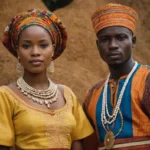 Equatorial Guinean Traditional Clothing: Reflecting Diverse Ethnic and Cultural Influences
Equatorial Guinean Traditional Clothing: Reflecting Diverse Ethnic and Cultural Influences
The Tete: A Headwear Icon
The tete, a conical headwear worn by men in some regions, is another prominent element of Congolese traditional clothing. The tete can be made from various materials, including straw, leather, or wood. The shape and design of the tete can vary depending on the ethnic group and the occasion. The tete often carries symbolic meaning, representing status, power, or social identity.
Traditional Attire for Special Occasions
Congolese traditional clothing plays a significant role in ceremonies and special events. For weddings, elaborate garments adorned with beads, shells, and other embellishments are worn by both men and women. These garments reflect the joy and celebration of the occasion. For funerals, more somber attire is worn, often incorporating black or white colors.
The Evolution of Congolese Traditional Clothing
While Congolese traditional clothing remains deeply rooted in history and tradition, it is also evolving to reflect the changing times. Modern designers are reinterpreting traditional motifs and techniques to create contemporary garments that appeal to a wider audience. This fusion of tradition and modernity allows Congolese fashion to remain relevant and vibrant while celebrating its heritage.
Modern Influences and Trends
The influence of Western fashion is evident in the evolving landscape of Congolese traditional clothing. Modern designers are incorporating modern fabrics, styles, and cuts while maintaining the essence of traditional designs. This blend of traditional and contemporary elements creates a unique and stylish look that celebrates both heritage and innovation.
The Future of Congolese Traditional Clothing
The future of Congolese traditional clothing looks promising. With its inherent beauty, cultural significance, and growing appeal, it is becoming increasingly recognized and celebrated on the global stage. As more designers and artisans embrace traditional techniques and designs, Congolese traditional clothing is poised to continue its evolution and captivate audiences worldwide.
FAQs about Congolese Traditional Clothing
-
- What is the significance of the colors used in Congolese traditional clothing?
The colors used in Congolese traditional clothing often carry symbolic meaning. Red represents power, blue symbolizes peace, and yellow signifies wealth. Other colors, such as green, black, and white, also have their own unique connotations.
-
- How is Congolese traditional clothing being preserved and passed down through generations?
The preservation and transmission of Congolese traditional clothing knowledge is often passed down through families and communities. This knowledge includes weaving techniques, dyeing methods, and the symbolic meanings associated with different garments. Educational programs and cultural organizations also play a role in promoting and preserving traditional clothing.
-
- How is modern fashion influencing Congolese traditional clothing?
Modern fashion is influencing Congolese traditional clothing by inspiring the incorporation of contemporary fabrics, styles, and cuts. This fusion of traditional and contemporary elements creates a unique and stylish look that celebrates both heritage and innovation.
Conclusion
Congolese traditional clothing is a treasure trove of cultural expression. From the vibrant liputa to the intricate designs of Kuba cloth, each garment tells a story, reflects a heritage, and celebrates the diversity and richness of Congolese culture. As traditional clothing evolves in response to modern influences, it continues to captivate audiences with its beauty, artistry, and cultural significance.

